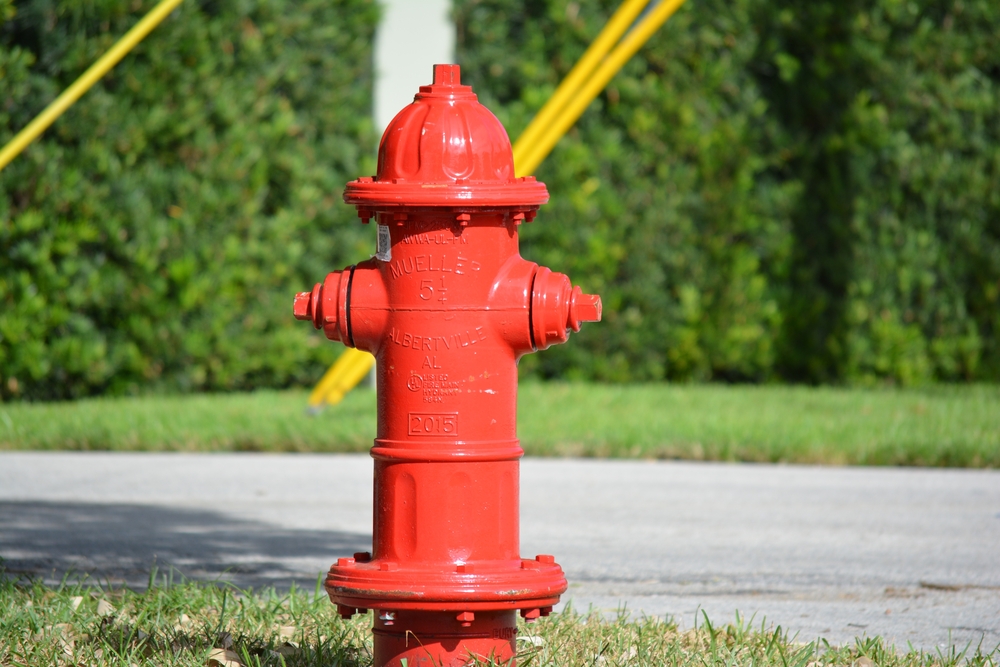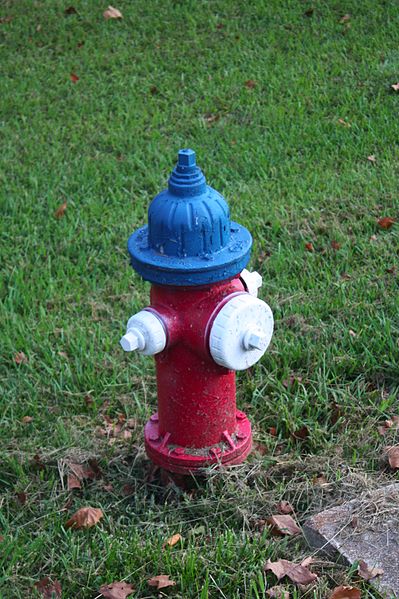

Unfortunately, it only has the capacity to run small loads like motorised valves or instrumentation, and not high loads like pumps. The power plant has a back-up electrical supply, the probability of this failing to start and run for the required time is 7 x10-4. The power plant will have an electrical supply from the national grid the probability that it is unavailable if required is 2 x10-3. If there is an accident then the probability of the hydrant system being unable to meet the requirement above must be less than 1 x 10-6. The power plant fire engines each have a capacity of 8000 litres of water and in an emergency need to be re-filled with water in 2 minutes, the capability to re-fill at this rate needs to be maintained for at least two hours. Individual hydrants (valved connections that a fire engine can connect to in order to re-fill with water) need to be located at various points in the power plant. Each has a maximum water supply flow rate of 2500 litres/min but will need a boost pump to maintain a consistent supply pressure.

The probability that either of these supplies are unavailable or fails on demand is 1 x10-3. There are two independent supplies of mains water into the power plant, one from the north and one from the south. (I am just information about the Architecture.)Ī new power generation factory (power plant) is under construction and your group is responsible to develop a dedicated fire hydrant system to allow power plant fire engines to be re-filled with water in an emergency.
Fire hydrant colors how to#
I read your blogs and it’s a piece of Amazing information but I want information about Fire Hydrant architecture how to the drow.ġ: describe the approach taken to developing the architecture, including any systemsĢ: include a schematic diagram of the system architecture selected, including sub-systems andīelow the requirement is completed. My name is krunal daslaniya, I live in the UK and I am pursuing my Master’s in system engineering. The following table provides the common colors according to the flow.

Usually, the top caps of the fire hydrants are painted. These colors indicate the expected flow during the operation. Maintenance Valves Color Coding of Fire Hydrantsįollowing NFPA standards, all fire hydrants are color-coded.The main components that constitute a fire hydrant system are: Table 1: Wet Barrel Hydrant vs Dry Barrel Hydrant Components of a Fire Hydrant System Maintenance of wet barrel hydrants is easier due to easy access. On the other hand, dry barrel hydrants are costlier and difficult to construct. A wet Hydrant is easier to construct and cheap. In the wet hydrant design, the water is placed aboveground The water in the dry barrel design is kept below ground to avoid freezing. Wet Hydrant or Wet Barrel Hydrant Dry Hydrant or Dry Barrel Hydrant Wet Hydrants are used where water-freezing issues are not present Dry barrel hydrants are used in cold regions where the temperature routine drops below water freezing temperature.

While all of this may sound simple the internal mechanics of a fire hydrant are a little more complex and can vary by region. They function as valves so firefighters can utilize the already present pressure in the water pipes. However, normal hydrants don’t change the water pressure or flow in any way. Underneath that connects the hydrant valve through a pipe called a riser. Every fire hydrant is essentially just an attachment to the main water line. They usually have a connection point to hook up a fire hose and a nut or bolt to turn on which will start the flow. Then after attaching the hoses, the firefighters open the valve for the water to flow. A special pentagonal wrench is used to remove the valve cover of the hydrant. In the event of a fire breakout, firefighters locate the fire hydrants, connect their hoses and then pump a large volume of pressurized water to put out the fire. Working of a Fire Hydrantįire hydrants with a variety of valves and connection points are seen in many places.


 0 kommentar(er)
0 kommentar(er)
